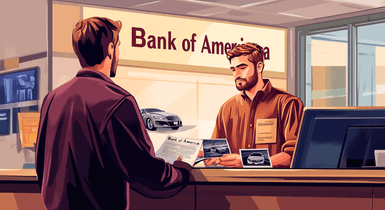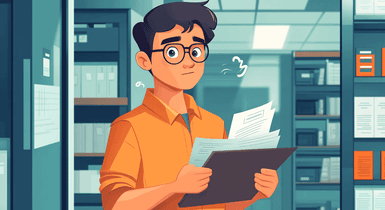Paycheck Protection Program Loan Forgiveness: Meaning, Requirements, and How to Apply?

The Paycheck Protection Program (PPP) is a critical financial lifeline for small businesses facing uncertainty during the COVID-19 pandemic. The premise is simple: use the funds to keep workers on their payroll, and the loan could be forgiven.
But who qualifies for this debt relief, and if your business hasn’t yet applied, is it too late to do so?
Considering how old the program is, "How can I get a PPP loan forgiveness?" is a surprisingly common question. This article aims to solve it by outlining how PPP loan forgiveness works, its eligibility criteria, and the ways to apply for it.
PPP Loan Forgiveness: Meaning & Benefits

The Paycheck Protection Program was initiated by the Small Business Administration (SBA), a government entity that offers loan programs to support small enterprises. The PPP was initially designed to help vulnerable businesses stay afloat amid the COVID-19 economic shutdown.
The main benefits offered by the PPP were:
- Improved cash flow;
- Employee retention support;
- Reduced financial burden;
- No impact on a business’s credit rating.
But the story doesn’t end there — the SBA ramped up audits in 2025, targeting loans over $2 million and flagged cases, while also launching an initiative to inform borrowers about their loan status and forgiveness options.
PPP loan forgiveness is quite easy to get as long as your business has used the program’s funds for its intended purpose — to support your business or community during the recent pandemic. As of April 2025, ?90% of all eligible PPP loans have been forgiven.
Forgiveness Requirements

What are PPP loan forgiveness requirements? To put it shortly, the loan is forgivable as long as your business meets the program’s criteria and has used the funds appropriately.
To qualify for full or partial PPP loan forgiveness, businesses must meet specific criteria set by the SBA:
- Use of Funds.
At least 60% of the PPP loan must be used to cover payroll costs. The remaining 40% can be used for other eligible expenses.
Payroll costs (up to 60% of the total forgiveness amount):
- Wages, salaries, tips, and commissions (up to $100,000 per employee annually);
- Employer-paid benefits (health insurance and retirement contributions);
- State and local payroll taxes.
Non-payroll costs (up to 40% of the total forgiveness amount):
- Rent or lease payments on business property;
- Mortgage interest on business-owned property;
- Software and utilities;
- Operations expenditures, property damage costs, and supplier costs;
- Worker protection expenses.
For a complete list of eligible expenses, check the SBA guidelines.
- Covered Period.
You must spend the loan proceeds during the covered period. Borrowers could choose a period of 8 to 24 weeks starting from the date they received their disbursement.
- Staffing.
To qualify for full forgiveness, you should maintain the same number of FTE employees and avoid reducing the compensation level by more than 25% for employees earning less than $100,000 annually. If you restored staff or wages by the end of the covered period or by December 31, 2020 (for first-draw loans), you may still qualify for complete forgiveness.
- Proper Documentation.
When businesses apply for PPP loan forgiveness, they must provide documentation to prove the correct use of the program’s money. The list of documents varies based on your loan amount and whether it was a first or second round loan.
Loan amount < $150,000
If your first-draw loan was under $150,000, no additional documents are required — just a signed form that functions as a certification of compliance. For second-draw loans under $150,000, you must prove that your business suffered a revenue drop of at least 25% in any 2020 quarter compared to the same quarter in 2019.
Loan amount > $150,000
For loans over $150,000, you must provide documentation on how the funds were used. Keep in mind that only the expenses we outlined above are eligible. Supporting documents may include third-party payroll service reports, bank account statements, state quarterly financial reports, tax forms, payment receipts, canceled checks, utility bills, contracts, etc.
The list of documents you can use may vary, so you should discuss it with your lender or refer to the instructions for your application form on the SBA’s portal in the sections titled Documents that Each Borrower Must Submit.
Did you know some banking professionals advised customers to accept the PPP funding, place it in a separate account, and wait for more explicit forgiveness rules? That advice proved wise as Congress weakened forgiveness criteria over time.
How Can You Apply for PPP Loan Forgiveness

If you received a PPP loan and haven’t yet applied for forgiveness, there’s still time. Though there are limitations on what expenses can be forgiven, most businesses can still at least reduce the debt.
As of April 2025, all borrowers can use SBA's direct forgiveness portal, which has an impressive average completion time of 15 minutes. You can also apply directly through your lender, a federally insured depository institution, or any federally insured credit union.
For instructions on how to get a PPP loan forgiveness, refer to the SBA’s forgiveness form:
For loans of $150,000 and below
For loans over $150,000
- Form 3508 PPP Loan Forgiveness Application + Instructions.
- Form 3508EZ PPP Loan Forgiveness Application + Instructions.
Did you know that, as of March 31, 2025, the SBA's Office of Inspector General has identified over $200 billion in potentially fraudulent loans?
Common Challenges with Forgiveness Applications

While a lot of businesses used PPP loan forgiveness to get some financial relief during the post-COVID recession, many more faced difficulties when applying. Understanding the most common pitfalls will help simplify and speed up the procedure.
Miscalculating Eligible Expenses
One of the most frequent issues is incorrectly calculated payroll costs. Simple mistakes like including ineligible compensation (such as payments over the $100,000 cap per employee) or excluding benefits like health insurance or retirement contributions can create a lot of problems later down the line.
How to avoid: Use a summary report, verify each line item against the SBA's definition of payroll costs, and include all eligible benefits. Carefully track spending during the covered period and allocate at least 60% of funds toward payroll expenses.
Incomplete Documentation
Another common issue is missing or unclear documentation. While you surely know your business well, the reviewers will need clear, complete records like lease agreements, payroll reports, or utility bills to approve forgiveness.
How to avoid: Use a checklist before applying. Ensure all documents are up-to-date and make it easy for your lender and the SBA to analyze them. If you need to make a change or add a document, contact your manager to complete the necessary updates.




